Plenary Speakers Abstracts
Chairman, Primary Care Consultation Group

For the first tume, WHO has allowed doctors working in primary care to determine the nature of the classification of mental distress commonly seen in primary care settings. The committee that designed the revised classification consisted of primary care physicians (PCPs) with a special interest in mental disorders, and psychiatrists who are responsible for training PCPs in mental health skills. The committee had representatives from each of the nine regions of the world, and equal numbers of males and females.
The resulting classification has a number of original features: “anxious depression” is shown to be the most common psychological disorder seen in primary care, and “bodily stress syndrome” (BSS) is defined slightly differently for primary care purposes and replaces “unexplained somatic complaints”, which are very common across the world. There are also common complaints that are not formal mental disorders, but have an important psychological component, like sleep disorders, self harm and post-traumatic stress disorder. Autism spectrum disorder makes its appearance, and “health anxiety’ replaces hypochondriases. The whole classification consists of 27 common disorders, instead of the 400 disorders described in the mental disorders section of the International Classification of Diseases.
The revised classification has been field tested in five countries, Spain, Mexico, Braztl, Pakistan and the People’s Republic of China (Hong Hong). It is true that anxiety can occur with none or little evidence of depression, and this is defined as ‘current anxiety’, and given the same duration as depression, of only 2 weeks.
The field trials have revealed the close relationship that exists between anxious depression and BSS in all countries involved in the field trials. The new classification leads to evidence based treatments of all conditions named in the classification.
MBBS, MMedSci, MA, PhD, FRCGP, FWACPsych, IDFAPA
Professor, NOVA University, Lisbon Portugal
Medical Director The Wood Street Medical Centre, 6 Linford Road, London E17 3LA UK.
PLENARY #01
Stigma and social distance for schizophrenia in psychiatrists, general practitioners and service users as a barrier to universal health
- The relationships between psychiatrists, general practitioners and service users social distance for schizophrenia and their confidence in the ability of general practitioners to manage schizophrenia in general practice
- How this affects access to the right health care
- How to identify new ways to tackle the malignancy of stigma and discrimination in mental health
Patients who suffer from mental illness do not make best use of standard medical facilities such as general practice facilities, and other primary care services. This puts them in a disadvantaged position when it comes to their health needs, especially as there is evidence that primary care is effective, more accessible and produces more positive long-term outcomes leading to a reduction in mortality and morbidity.
It has been postulated that a reason for this lack of progress is stigma and discrimination which can be assessed by measuring social distance.
To tackle the stigma associated with a Serious Mental Illness (SMI) such as schizophrenia, and reduce the disparity in physical and mental health in people with serious mental illness so that patients can reap the benefits of a primary care transformation process, there is a need to have a deeper understanding of the barriers patients face in accessing primary care either from the community or from secondary care mental health services.
Why this matters
- Patients with schizophrenia also present more often to general practitioners for a variety of reasons, including collection of repeat prescriptions, but will rarely talk about their physical or mental health spontaneously
- Patients with schizophrenia consult general practitioners more often than the average patient, often with somatic complaints rather than symptoms of mental illness
- Despite this they receive very little specific evidence based practice for either their physical or mental health condition
- This could be related to poor knowledge, skills and confidence in general practitioners to manage the health of patients with schizophrenia
- A low detection rate of physical health problems in those with a mental health diagnosis has been linked to a lack of self-confidence, characteristics in patients with a diagnosis of schizophrenia
I will present some key findings from the literature and from my own research in London.
Key references or resources
- 1. B. Starfield, L. Shi, J. Macinko. “Contribution of Primary Care to health Systems and Health”. In: The Millbank Quarterly. 2005, 83(3), 457-502.
- 2. M. Funk and G. Ivbijaro (Eds). Integrating Mental Health into Primary Care: A Global Perspective. World Health Organisation (WHO) and World Organization of Family Doctors (Wonca), 2008. ISBN: 978-92-4-156368-0.
- 3. 23. E. S. Bogardus. “Measuring Social Distance”. In: Journal of Applied Sociology. 1925. no. 1-2, pp. 216-226
- T. Burns, T. Kendrick. “The primary Care of Patients with Schizophrenia: A Search for Good Practice”. In: British Journal of General Practice. 1997, 47, pp. 515-520
- I. Nazareth, M. King, A. Haines, S. S. Tai, G. Hall. “Care of Schizophrenia in General Practice”. In: British Medical Journal. 1993, 307, pp. 910.
PLENARY #02
Mental health dignity and the voice of service users – results of a global survey
- To summarise the themes from mental health service user stories to enable mental health professionals to understand what makes for a good patient experience
Service user stories are vital to mental health professionals in understanding what makes for a good patient experience.
The study conducted by an independent research company in conjunction with the World Dignity Project asked a range of global service user volunteers to describe two patient experiences relating to mental health in writing online or by posting a 2-3 minute video or image from their mobile phone to represent the experience.
Volunteers were asked to recall a time when they had:
- A positive healthcare experience and the feelings that evoked
- A negative healthcare experience, what made it negative and the feelings that evoked
- Volunteer participants were then asked to imagine how the negative experience could become a positive experience and describe this.
Finally service user volunteers were asked:
- What does equality of treatment mean to you, if anything?
- What does dignity in patient experience mean to you, if anything?
We will present the findings and relate them to the mission of the World Dignity Project which is to stand up for, fight for and promote mental health and well-being for all, with equality of treatment and dignity in experience.
Claire Brooks is President of ModelPeople Inc., a global consumer research and strategy consultancy which works with global corporations across many industries, including healthcare. She has held senior roles in general management, brand management and strategic brand planning, with Fortune 500 corporations and ad agencies in Europe and the US. Claire conducted global research with patients, their caregivers and health professionals into the experience of dignity in mental health for the World Dignity project, which was presented at the Lille International Congress.
Claire has an MA in Social and Political Sciences from Cambridge University and an MBA from Durham University, where she was also a graduate professor, teaching MBA programs in Marketing. Claire has been a non-executive director with the British National Health Service, advising on patient research ethics and communications, and was also named by Time and the New York Times as an expert on Millennial cultural trends, including the emphasis on mental health in the workplace. She chairs a charity serving youth in Chicago neighborhoods, and is the author of Marketing with Strategic Empathy® (Kogan Page, 2016).
Fighting Stigma with Strategic Empathy®
- Gain an overview of new empathy-based strategic planning approaches in for-profit corporations
- Explore theoretical frameworks and research methods which will help NGOs develop stakeholder empathy
- Explore strategic planning models and approaches to activate empathy, for greater NGO success in advocacy and donor engagement
Mental health stigma arises from a lack of human empathy for those with mental health conditions. NGOs must nurture empathy for stigmatized groups in order to drive effective change in attitudes, reduce discrimination for improved mental health outcomes and sustain organizational funding.
A focused strategic plan is essential for NGO success. However strategic planning approaches borrowed from the business world can often sit uncomfortably in the not-for-profit world. Philip Kotler (2007) says that NGOs are not ‘customer’ focused even though they wish to be, but is it meaningful (Lee 2014) to draw demarcation lines between patients as ‘customers’ on the one hand and NGO staff, volunteers and healthcare professionals on the other?
Now, changes in strategic planning approaches in the for-profit world may offer NGOs a solution to this strategic planning dilemma. In the world’s largest corporations, the emphasis has shifted from ‘customers’ and the customer experience to focus on the human experience. As a result, business leaders have recognized that it’s essential to nurture a shared sense of empathy among all stakeholder groups, as a basis for effective strategy formation and implementation. It’s important to note that empathy is not a soft skill, but is proven to be a powerful driver of success and change in both for-profit and not-for-profit organizations (Brooks 2016).This session will introduce Strategic Empathy®: a process and tools for empathy-based learning and strategic activation, using a team-based approach which engages with the needs and experiences of all organizational stakeholders. It will demonstrate research approaches and strategy planning tools that can be used by NGOs to develop stakeholder empathy and empathy-based action plans for advocacy, fund-raising and organizational management and change. The presentation will be illustrated with a case study of empathy research conducted with mental health patients, professionals and caregivers in 22 countries, which led to the development of a taxonomy of dignity in mental health and a brand identity and communications for the launch of the World Dignity Project.
Key references or resources
- Andreasen, AR and Kotler PT (2007) Strategic Marketing for Non-Profit Organizations pp46 and 282, Prentice Hall, New Jersey
- Brooks, C (2016) Marketing with Strategic Empathy® Chapter 9, Kogan Page, London
- Lee, T (2014) How to Spread Empathy in Healthcare, Harvard Business Review, 17 July
Programme Manager for mental health
WHO Regional Office for Europe
The two dimensions of universal health coverage: service access and financial protection.
- To build a closer understanding of the different components of the universal health coverage concept and agenda
- To gain knowledge about the household impact of inadequate mental health service access and financial protection
- To gain insights into the links between mental health and the sustainable development agenda.
Current coverage of mental health care for persons in need of care and support is inadequate, not only in terms of access to services but also in terms of financial protection. The household consequences of inadequate service access are felt in terms of unmet need and diminished health while inadequate financial protection leads to high and potentially impoverishing out-of-pocket (OOP) expenditures and may suppress service uptake. Evidence for these effects will be reviewed and discussed, including recent findings from a multi-country household survey conducted under the auspices of the EU-funded Emerald project.
Efforts to scale up community-based public mental health services can contribute strongly to greater equality of access, because such services will serve more people in need and with less reliance on direct OOP spending. This veracity of this claim will also be discussed in the light of available evidence and analysis, including links to the broader universal health coverage (UHC) and sustainable development agendas.
Key references or resources
- WHO (World Health Organization). 2010. The World Health Report
- Health Systems Financing
- The Path to Universal Coverage. Geneva: WHO
BA, MSc, MBChB, MD, FRCGP
Professor of Primary Medical Care, University of Liverpool, UK
Chair, WONCA Working Party for Mental Health
Visiting Research Fellow, University of Melbourne, Australia
Suffering and hope in the primary care consultation
- To identify underlying vision, key roles and core competencies for family doctors, when caring for people with mental health problems in primary care settings.
Family doctors have a crucial role in the care for people with mental health problems. They are at the interface between the person, their family and their community on the one hand, and the range of available health and social care provision on the other. Yet many family doctors are concerned that they lack the knowledge and skills they need to provide effective, evidence-based care.
During this plenary presentation, Professor Dowrick will address these concerns.
First he will set out his vision for primary mental health care, based on the principles that family doctors have the responsibility, in every consultation, to acknowledge suffering and offer hope. He will explore barriers that can make it difficult for family doctors to engage with patients, and suggest ways in which they can turn towards suffering. He will explain how family doctors can offer hope to patients in distress: through the exercise of compassion; by adopting a positive approach; from the discovery and application of new knowledge (evidence-based hopefulness); and by changing the ways in which they think about patients as persons.
Then he will explain how the WONCA Working Party for Mental Health has produced expert guidance on what can reasonably be expected of trained and qualified family doctors, working in primary care settings in any part of the world, when caring for people with mental health problems.
This guidance has six domains:
- Values: Family doctors consider mental health to be important.
- Communication skills: Family doctors adopt person-centred approaches to assess, manage and support people with mental health problems.
- Assessment: Family doctors identify and diagnose common mental health problems, and can identify severe mental health problems and assess risk.
- Management: Family doctors manage people with common mental health problems, and the physical health of people with severe mental health problems.
- Collaboration and referral: Family doctors use a range of available options and resources for care of people with mental health problems, and tailor them to patients’ and carers’ needs.
- Reflective practice: Family doctors take care of their own health and well-being.
Key references or resources
- Dowrick C. Beyond Depression (2nd edition). Oxford, Oxford University Press, 2009
- Dowrick C. Wellbecoming Blog. www.wellbecoming.blogspot.com
- Dowrick C. Suffering and Hope: 3rd Helen Lester Memorial Lecture. BJGP Open; 14 February 2017; BJGP-2016-0584.
- WONCA Working Party for Mental Health. Core Competencies of family doctors in primary mental health care: http://www.globalfamilydoctor.com/site/DefaultSite/filesystem/documents/Groups/Mental%20Health/Core%20competencies%20January%202018.pdf
- Dowrick C. (ed). Person-centred Primary Care: Searching for the Self. London, Routledge, 2018.
Lecturer
Department of Mental Health - Faculty of Health Sciences
#STOPSTIGMA: A National Mental Health Awareness Campaign
Clinical Chairman, Mental Health Services, Malta
Psychiatry and the Media, New Challenges and New Opportunities
- To understand better how the media, both traditional and social, can be used for the benefit of psychiatry and the patients
Mental health stigma arises from a lack of human empathy for those with mental health conditions. NGOs must nurture empathy for stigmatized groups in order to drive effective change in attitudes, reduce discrimination for improved mental health outcomes and sustain organizational funding.
One of the main problems in psychiatry is that persons affected with mental illness do not seek help. A major contributory factor to this is. The media; TV, Radio and printed media, can play a major role in improving this situation. Research and personal experience are used to discuss this. A controversial issue is how the press should deal with reporting suicides, and this will also be discussed. The social media is taking over most of the time and space of media. It is an increasingly rising phenomenon, and it is providing new challenges. But it can also provide new opportunities for improving mental well being.
President, World Psychiatric Association
Psychiatrists as partners in universal health coverage
- To recall the value of integrating mental health in general health care and public health
- To analyse the contributions of psychiatrists to several types of interventions along with local, global and professional partners
- To appreciate the contribution of local collective action to mental health care and UHC
- To understand that mental health can be improved whatever the level of resources in a community and that sustaining its improvement requires investment
Mental health is an integral part of general health care and public health. Psychiatrists can make a fundamental contribution to promoting and supporting universal health coverage (UHC): through engaging primary health workers and communities in mental health work as well as through their direct clinical actions.
The Alma-Ata Declaration of 1978 remains a guide to good health care and achieving UHC. Consistent with the Declaration’s principles, there are three keys to integrating mental health in UHC:
- Creative engagement with primary health care
- Collaboration with people with lived experience and their family supporters and with local communities
- Early intervention as mental illnesses emerge
Best practice examples emerge from two stands of mental health work:
- Community-based rehabilitation (CBR) relies on integration with the health system, collaboration with service users, family supporters and community sectors beyond health, and working with other mental health practitioners where available. CBR in a scarce resource setting can demonstrate a natural alignment with early intervention as illnesses emerge, prevention of illnesses and promotion of mental health.
- Improving mental health for women in the perinatal period requires several types of interventions. Priorities for the health system include early intervention for depression and other mental disorders, gender sensitive clinical care and support for recovery. This work is vital under conditions of scarcity and adversity. It can be done across a range of settings including primary healthcare services, and mother and child care settings.
Key references or resources
- Patel V et al. 2016. Addressing the burden of mental, neurological, and substance use disorders: key messages from Disease Control Priorities, 3rd edition. The Lancet. 387: 1672–85
- Herrman H. 2014. (Editorial) The central place of psychiatry in healthcare worldwide. Acta Psychiatrica Scandinavica. 129: 401–403.
- Chatterjee S, Naik S, John S et al 2014. Effectiveness of a community-based intervention for people with schizophrenia and their caregivers in India (COPSI): a randomised controlled trial. The Lancet 383: 1385-94
- Herrman H. 2015. Protecting the mental health of women in the perinatal period. The Lancet Psychiatry 2(2): 116-118.
- Herrman H. 2018. Mainstreaming psychiatry: implementing the WPA Action Plan 2017-2020. World Psychiatry. 17(2): 236-237
President of World Organization of Family Doctors (Nov 2016-2018): and Professor of Primary Care at Norwich Medical School, University of East Anglia, U.K.
Medicine, morals, and mental health - making universal health coverage meaningful in practice
- This plenary will help delegates to review what needs to be included in the primary health care component of UHC in order for this to allow effective mental health care
- To consider both who needs to be in the PHC workforce, and what trainings and motivations these workers need
- To develop their analysis of gaps and strategies to improve their own provision.
Universal health coverage needs to allow access to a broad range of preventive as well as curative services without significant financial or practical barriers. The services of a team who can offer care over time, and form relationships that utilise knowledge of the individuals and their societal context can be particularly important in both diagnosis and appropriate intervention in the wide range of mental health problems that affect our patients.
This includes ensuring training and retention of competencies that allow health professionals to assist people to reduce the negative impacts of adverse life events, the disabling consequences of psychological trauma, and support resilience and coping mechanisms. The team therefore need to be generalists – working across different conditions and illness episodes, with the person rather than specific problems or diseases. The conditions of practice also need to motivate workers to engage with relational and emotional aspects of care, and to permit both time and continuity – or the intention to address these more complex and personalised agendas becomes a victim of underresourcing and burnout. But many countries are ticking the UHC box by provision of very basic packages with limited services, and continue to struggle with an imbalance of training and resource inputs that favours hospital based care.
This talk with review key components of UHC, models of the core primary care team that maximise effective and efficient care while retaining the primacy of the wellbeing of individuals, and make recommendations for the steps that are needed to achieve a really strong psychologically enabling primary care for all our patients.
Key references or resources
- http://www.who.int/health_financing/universal_coverage_definition/en/
- http://www.globalfamilydoctor.com/InternationalIssues/WONCAGuidebook.aspx
- http://www.globalfamilydoctor.com/site/DefaultSite/filesystem/documents/Groups/Mental%20Health/Core%20competencies%20January%202018.pdf
- http://www.globalfamilydoctor.com/site/DefaultSite/filesystem/documents/Groups/Mental%20Health/WPMH%20role%20of%20FPs%20in%20non%20drug%20interventions.pdf
- http://www.globalfamilydoctor.com/groups/WorkingParties/MentalHealth3/SMI.aspx
President, World Association of Social Psychiatry, Pushpagiri Institute of Medical Sciences, Tiruvalla, India
Social determinants of mental health- differing perspectives: Developing and developed countries
- A discussion on the social determinants of mental health
- Understanding the differing perspectives across the world
The social determinants of health are the economic and social conditions and their distribution among the population that influence individual and group differences in health status. They are health promoting factors found in one's living and working conditions (such as the distribution of income, wealth, influence, and power), rather than individual (such as behavioural risk factors or genetics) that influence the risk for a disease or vulnerability to disease or injury. The distributions of social determinants are shaped by public policies that reflect the influence of prevailing political ideologies of those governing a jurisdiction. These SDOH are clearly related to health outcomes, are closely tied to public policy, and are clearly understandable by the public. They tend to cluster together – for example, those living in poverty also experience numerous other adverse social determinants.
The quality and equitable distribution of these social determinants are clearly well below the standards seen in developed nations WHO Commission on Social Determinants of Health (2008). published a report entitled "Closing the Gap in a Generation". This report identified two broad areas of social determinants of health that needed to be addressed. The first area was daily living conditions, which included healthy physical environments, fair employment and decent work, social protection across the lifespan, and access to health care. The 2011 World Conference on Social Determinants of Health Rio Political Declaration on Social Determinants of Health. This declaration involved an affirmation that health inequities are unacceptable, and noted that these inequities arise from the societal conditions in which people are born, grow, live, work, and age, including early childhood development, education, economic status, employment and decent work, housing environment, and effective prevention and treatment of health problems. Mental health inequality refers to the differences in quality of mental health and mental health care for different identities and populations.
There is a growing unmet need for mental health services and equity in the quality of these services. Discussion about the nature and vision of the GMH agenda oscillated between two antagonistic poles. One described it as a bottom-up, public health movement driven by local knowledge and priorities, with the aim of providing access to mental health care for everyone. Global Mental Health- Dichotomies divide between a powerful global North and a receiving global South. Western psychiatry and traditional healing practices engage in an asymmetrical relationship in which traditional local practices have “less resources, social capital, and power because they are the traditions of poorer people”. The greatest population-based impact for improving mental health and reducing risk of mental illnesses and substance use disorders will be achieved by optimizing public policies to make them more health promoting, and by altering social norms so that the health of all members of society is a priority.
Key references or resources
- Social determinants of mental health.WHO and the Calouste Gulbenkian Foundation (2014)
- Social determinants of mental health. Allen J, Balfour R, Bell R, Marmot M. Int Rev Psychiatry. 2014;26(4):392-407
Professor of Psychiatry,
Barbara and Corbin Robertson Jr. Endowed Chair in Personality Disorders
Baylor College of Medicine, Houston, Texas, USA
Personality Styles and Personality Disorder
- Understand the dimensional nature of personality and personality disorders
- Become familiar with the Alternative Model for Personality Disorders (AMPD) in Section III of DSM-5.
- Learn about personality styles, how to assess them, and how to recognize which styles fit best in relationships and in work settings
A broad consensus has developed that personality pathology is best conceptualized dimensionally, rather than as a set of discrete, categorical disorders. The American Psychiatric Association Workgroup on Personality and Personality Disorders (J Oldham, Co-Chair) developed an Alternative Model for Personality Disorders (AMPD), now published in Section III of the Diagnostic and Statistical Manual of Mental Disorders, 5th Edition (DSM-5).
The AMPD considers any individual’s personality as a unique combination of personality trait dimensions and trait facets. Only when some of these traits are sufficiently dominant and intense that they lead to moderate or greater impairment in functioning is a personality disorder judged to be present. The recently published Structured Clinical Interview for the Alternative Model for Personality Disorders (SCID-AMPD) will be described, which is a semi-structured clinical interview useful for clinical research and for detailed evaluation of personality pathology. In addition, the planning process for the diagnosis of personality disorders to be included in the International Classification of Diseases, 11th Edition will be reviewed, which is also proposing a trait-domain-based dimensional strategy to describe personality styles and to diagnose personality disorders.
Finally, a web-based self-assessment personality test (www.npsp25.com) will be described that produces a scored personality self-portrait and presents comparisons of an individual’s results with norms from over 12,000 individuals worldwide who have taken the test.
Key references or resources
- Oldham JM and Morris LB, The New Personality Self-Portrait, Bantam Books, New York, 1995
- www.npsp25.com
- First MB, Skodol AE, Bender DS, Oldham JM, The Structured Clinical Interview for the DSM-5 Alternative Model for Personality Disorders, American Psychiatric Association Publishing, Arlington, Virginia, 2018
- Oldham JM, Personality disorders: Recent history and new directions. In Oldham JM, Skodol AE, Bender DS (eds), The American Psychiatric Publishing Textbook of Personality Disorders, American Psychiatric Publishing, Washington, DC, 2014
- American Psychiatric Association, Diagnostic and Statistical Manual of Mental Disorders, 5th Edition/ American Psychiatric Association Publishing, Arlington, Virginia, 2013
Professor of Psychiatry
Associate Director, Univ of Michigan Comprehensive Depression Center
University of Michigan
Physician Mental Health and Well-Being
By the end of this presentation, participants will be able to:
- Discuss epidemiological factors in physician mental health and well being
- Identify barriers
- Elucidate risk factors
- Determine models for prevention
- Assess current management strategies
Physicians are susceptible, as others, to suffer from mental health conditions which may start early in medical school and continue through later stages of professional and personal development. There is an evolving literature to help us better understand risk factors and ways to prevent, help and improve the recognition and management of such impairment. Alcohol and substance misuse, suicide, burnout, stress reduction, reduction in errors, disruptive behaviors are all important areas to address.
Goals are to decrease stigma, provide opportunities for access of care, harm reduction, improve communication, and increase quality of life.
Key references or resources
- Brower KJ, Riba MB: Eds. Physician Mental Health and Well-Being. Springer 2017.
- Dewa CS, Jacobs P, Thanth NX, Loong D. An estimate of the cost of burnout on early retirement and reduction in clinical hours of practicing physicians in Canada. BMC Health Serv Res. 20141:14:254
- Sen S, Kranzler HR, Krystal JH, Speller H, Chan G, Gelernter J, Guille C: A prospective cohort study investigating factors associated with depression during medical internship. Arch Gen Psychiatry. 2010:67 (6): 557-65
Jean-Luc Roelandt, MD, director, WHOCC Lille
Local mental health councils – tools for promotion of mental health in the community
- How to concretely promote a local mental health council in a city
Promoting the participation of mental health in the city means creating local consultation tables, involving the citizens of the cities: inhabitants, users, families and also all the social and health services of the city and the State that contribute to health and social inclusion.
These local mental health councils are places for co-construction of local public policies, empowerment of users and improvement of services.
Key references or resources
- Roelandt JL, Daumerie N, Defromont L, Caria A, Bastow P, Kishore J. Community mental health service: an experience from the East Lille. France. J Mental Health Hum Behav 2014;19:10-18
- Roelandt JL, El Ghozi L. Santé mentale et citoyenneté : une histoire française. L'Information Psychiatrique. 2015;91(7):539-548. doi:10.1684/ipe.2015.1371
- Symposium Proceedings « City and mental health: From WHO recommendations to concrete good practices for mental health cares in the city? ». Paris, France. 2008
- Auffret M. Au niveau européen: bilan de la conférence de Lisbonne. Citoyenneté et santé mentale. France. 2012
Raghnia Chabane (Local elected official, City Policy, Security and Citizenship), Simon VASSEUR-BACLE (Projects and International Affairs Manager, WHOCC Lille), Jean-Luc Roelandt (Director, WHOCC Lille)
Local mental health councils: How to organize local health democracy at the territorial level?
- What is local health democracy ?
- Which partners ?
- Description of a local model
Local mental health councils are a model for the application of local health democracy at the territorial level, as advocated in a recent report on health democracy. By involving all the actors concerned with mental health, and first and foremost user associations, they must make it possible to implement actions that promote the social inclusion and well-being of all citizens, particularly those living with a mental disorder. The Inter-municipal Association of Health, Mental Health, Citizenship (AISSMC) of six cities of the south-eastern suburb of Lille operates on this model. It is the result of a partnership between professionals from a public mental health hospital (EPSM Lille Metropole - EPSM LM) and local elected officials initiated over 30 years ago. With a care system fully integrated into the city, the current project of the mental health centre in these cities aims at promoting recovery and strengthening health democracy.
The AISSMC implements projects in four main areas: access to and maintenance of housing, work, leisure and culture; prevention and information in mental health; user participation; implementation of coordination spaces.
Elected officials are not only responsible for public tranquility, security or the protection of their fellow citizens' property. They are responsible and therefore, more broadly, guarantors of the well-being of the population, its cohesion and, above all, territorial equality for all. This is an obligation to citizens and, in particular, to the most vulnerable populations. That is why the issue of health is a political one. It is a national issue, of course, but it is also a local issue. The six municipalities have therefore decided to tackle this problem, especially since it seems obvious that the city is a good scale to address these problems.
The associations of users of the territory have been present for several years in the decision-making bodies of the AISSMC. In order to be as close as possible to the objective recommended by WHO concerning the empowerment of users, and to offer services more adapted to their needs, it appeared necessary to involve service users, direct beneficiaries of care and support, in the decision-making process, at all levels.
The Mental Health Service was designated in 1998 as a "Pilot Site for Community Mental Health" by the Mental Health Department of the World Health Organization (WHO). Since 2001, it has been working closely with the WHO French Collaborating Centre for Research and Training in Mental Health (CCOMS). It is a laboratory for the application of the recommendations of WHO and a nationally and internationally recognized place of visit and training.
Key references or resources
- • Centre national de ressources et d’appui aux CLSM, CCOMS Lille, Etat des lieux national des CLSM, CCOMS Lille, 2018, 30 p. http://clsm-ccoms.org/wp-content/uploads/2018/09Etat-des-lieux-national-2018-des-CLSM-en-France_Centre-national-de-ressources-et-dappui-aux-CLSM-2.pdf
- • Elus, santé publique & territoires (ESPT) et CCOMS, Actes de la 18ème Journée nationale d’étude et de la 4ème Rencontre nationale des CLSM, « Le CLSM, une révolution tranquille » - Talence – 19 janvier 2017, Paris, ESPT, 2017, 161 p.
- • GUEZENNEC Pauline, ROELANDT Jean‑Luc, Les CLSM : le chainon manquant de la santé mentale, La santé en action, juin 2016, n° 436, pp. 5-7 http://inpes.santepubliquefrance.fr/SLH/pdf/sante-action-436.pdf
Lecturer, Department of Mental Health, University of Malta
Vice-President, Maltese Association of Psychiatric Nurses (MAPN)
Empowering nurses working in the mental health setting: Standards of Practice
Learning Objectives:
- Provide a set of standards for practice for nurses working within mental health.
- Empower the nursing profession to actively engage in the care management of clients.
- Increase evidence based practice within the local practice.
Psychiatric Mental Health Nursing (PMHN) in Malta has a relatively short history. Its evolution was mainly due to the recognition of the effects of institutionalisation and the country’s efforts to provide high quality specialised care for individuals who experience mental health conditions. Such specialisation locally started in the late 80s with many of the nurses training abroad such as in UK. In the early 1990s the University of Malta offered its first courses in psychiatric and mental health nursing at undergraduate level. This was the start of a constant evolution both in academia and within clinical practice. Such evolution brought about changes in the education of Mental Health Nurses with the introduction of a Degree in Mental Health Nursing and postgraduate Masters in Mental Health Nursing. Other important milestones within the development of mental health services in Malta include the introduction of community based services, specialised child and adolescent services, substance misuses services and the much needed revision in the Maltese Mental Health Act (2012). All these changes had a direct effect on the provision of care by nurses and other professionals working within the mental health field.
The roles and responsibilities of Psychiatric and Mental Health nurses are very diverse and many a times difficult to quantify. Such difficulty also hinders the integration of newly qualified staff to effectively provide care within the various specialised services. Locally, the need for clarifying such roles and responsibilities continued to increase as the services developed, which led to the development of a document that sets the benchmark for the provision of care, professional competency and guidance for professional development.
The Psychiatric and Mental Health Nursing standards address core issues for PMHN professionals in Malta but are of great reference on an International level. The core issues outlined in the standards include the fundamental building blocks of the profession but also specialised practices essential to provide the highest quality of care delivery. The main focus of these standards are to empower the profession by promoting professional attitudes, knowledge and skills within the mental health sector. Empowerment of the nursing profession within mental health is essential to solidify the co-ordination and delivery of quality care. Psychiatric and Mental Health Nursing is the profession which is present in all the aspects of care leading to recovery.
The Psychiatric and Mental Health Nursing Standards serve as the blueprint for nurses working within the mental health sector to achieve this.
Key references or resources
- Foster S., & Barret, R. (2001) The Role of the Mental Health Nurse. Oxford University Press.
- The Maltese Association of Psychiatric Nurses. (2017) Psychiatric Mental Health Nursing Standards. Sunland Printers, Malta
- Ward, M.F. (2012) The Turku Declaration: A consensus document on psychiatric – mental health nursing roles, education and practice. Journal of Psychosocial Nursing, 50(3):1-2
MD, PhD, FRCPsych.
President,
Association for the Improvement of Mental Health Programs
Obstacles to success of mental health programs
- The participants will be better able to build national or local mental health programs
Despite the evidence of the magnitude and severity of problems related to mental disorders and the existence of well developed and effective methods of interventions that could prevent or reduce mental disorders mental health programs continue to receive low priority in most parts of the world.
The main reasons for this are three: (i) the continuing stigma related to mental illness and all that is related to mental illness (including people who have these disorders, services that are to help them, treatment methods, investigations into the nature of the disorders) (ii) the insufficient attention given to the acquisition and use of leadership and professional skills which could help in building programs and (iii) the current trends of development of society as a whole.
The presentation will address these issues and offer suggestions about action that could improve the situation.Key references or resources
- Sartorius, N. ( 2002) Fighting for Mental health, Cambridge University Press
- Gaebel W et al (eds)(2017) The stigma of mental illness: end of the story?
- Springer,Heidelberg
Director, Department of Mental Health and Substance Abuse
World Health Organization Geneva
Mental health within universal health coverage: The why and the how
- The concept of UHC
- The rationale for including mental health within UHC
- How to make it happen in high, medium and low resource settings
UHC is an integral part of United Nations sustainable development goals 2015-2030, hence endorsed by all governments at the highest level. World Health Organization has also accepted UHC as one of the most important objectives in its work. Since mental wellbeing is a component of health and mental disorders are common and cause a large amount of disability, mental health must be included within the implementation of UHC.
The most important impact of this will be availability of much needed resources for mental health. However, the modalities of successful universal coverage of mental health care will face the same barriers that have affected scaling up care for decades, including paucity of mental health human resources, lack of national and local leadership and demand side factors. A careful attention of these in high, medium and low resource settings is a necessary condition to fulfil the promise of UHC for mental health.
Key references or resources
- http://www.who.int/healthinfo/universal_health_coverage/report/2017/en/
- The Lancet Commission on Global Mental Health and Sustainable Development (forthcoming)
- http://www.who.int/mental_health/action_plan_2013/en/
School of Medicine and Health Sciences
Milken Institute School of Public Health
The George Washington University Washington DC USA
TOTAL Health for All in the 21st Century
At the conclusion of this presentation the participants will:
- Understand the multiple determinants of health
- Know the global burden and of disability caused by non-communicable diseases (NCDs)
- Learn about the NCDs health and economic consequences
- Appreciate the merits of the innovative TOTAL Health model integrating primary care, mental health, public health
- Be able to apply the TOTAL Health model for #healthforall initiatives at clinical, educational, research and policy levels
Non-communicable diseases (NCDs) lead in the global burden of diseases and of disability. Cardiovascular disorders and Mental Disorders lead, among NCDs, in the global burden of diseases and of disability. They are comorbid with each other and are determined by multiple, converging social, biologic, genetic, psychologic, environmental factors, and adverse childhood experiences. They impact the health of individuals, families, populations and countries’ economies across the low-, middle-, and high-income spectrum.
The author presents the innovative TOTAL Health model integrating primary care, mental/behavioural health, and public health, delivered through the platform of collaborative/integrated care and buttressed by a primary prevention component of health protection, promotion, illness prevention. The TOTAL Health model enhances access, outcomes and diminishes stigma. It is also economically sustainable and would be one of several invaluable instruments to achieving health for all in 21st century. Recent World Bank Group (WBG), Organization for Economic Cooperation and Development (OECD), and World Health Organization (WHO) #healthforall initiatives are presented and the relevance of the TOTAL Health model to such initiatives is addressed.
Key references or resources
- Sorel, E., TOTAL Health for All in the 21st Century, in Dignity in Mental Health, World Federation for Mental Health, pp.16-17, Occoquan, VA 2015
- World Bank Group (2018) Moving Forward: Mental Health Stories from Around the World, Washington DC
- OECD (2014) Making Mental Health Count: The Social and Economic Costs of Neglecting Mental Health Care, OECD Publishing
- Sorel, E., Raney, L., Position Statement on Integrated Care, American Psychiatric Association, July 2016
Head of Psychiatric Department School of Medicine University of Lille France
Mental Health and imprisonment: a major challenge
Studies around the world consistently indicate that the health of incarcerated people is more impaired than that of the general population. Since the 1990s, all European countries have experienced an unprecedented increase in the prevalence of mental disorders in prisons. This evolution is not the simple fact of the reduction of psychiatric beds nor the evolution of penal policies.
It reflects the consequences of a growing lack of care for people with psychiatric disorders, living in the community in often precarious conditions. Detention, even for short periods, increases the risk of disruptions in continuity of care and rehabilitation. Beyond the almost daily problems of stigmatization, prisoners with a psychiatric disorder have more limited access to prison work and are more often victims of psychological and physical abuse and more exposed to containment and isolation measures, potentially causing worsening of their medical condition.
Prison overcrowding also aggravates these difficulties and further limits access to care. The pathways of people moving between health care and penal institutions should be further studied to better define the orientations of psychiatric and mental health care. The compartmentalization of practices, the recognition of each other's skills, and the sharing of training, especially on the crucial problem of co-morbidities, contribute to improving access to care and reducing the penalization of the social complications of psychiatric disorders.
- World Federation For Mental Health (WFMH), President
- The Argentine Association of Mental Health (AASM), founder, former president and current scientific secretary.
- Mental Health Advisor of the National Direction of Mental Health the Ministry of Health of Argentina
- Member of the Reviewing Body of the National Law on Mental Health (National Entity that ensures that the Law on Mental Health, including the patients’ human rights, is being complied with).
- Addictions Program Coordinator at Alvarez Hospital of Buenos Aires, Argentina.
- Member of the Mental Health Care Department at the Alvarez Hospital.
- Member of The Addictions Network of the Government of Buenos Aires. (National Entity that develops public policies on mental health at the City of Buenos Aires).
- Professor of Post-Graduate Course for Specialists in drug abuse, at the National University of Tucumán, Argentina.
- Associate Professor of the Department of Clinical Psychology at the Argentine University J. F. Kennedy
- Professor at the Mental Health Department of the Medical School at the University of Buenos Aires
- Professor at the Psychology School at the University of Buenos Aires.
- Author of numerous articles and books on Mental Health in general and about addictions in particular.
Interdisciplinary approaches for socio-health inclusion in mental health policies
- The aim of this presentation is to publicize the work and initiatives of the World Federation of Mental Health (FMMF) to reduce the stigma and discrimination of people with mental health problems
In most countries, people with mental health problems do not have the right to receive medical care. Social representations and the stigma associated with this problem generate discriminatory attitudes and practices and social marginalization, both in society in general and in the health system in particular.
We often see people who come from people with mental health problems who are expelled from health care facilities or who have serious difficulties in accessing decent treatment and we see how human rights are continuously violated.

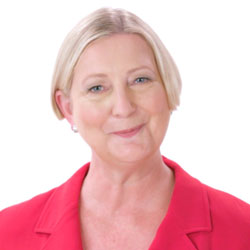

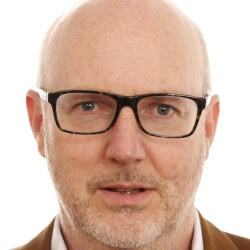






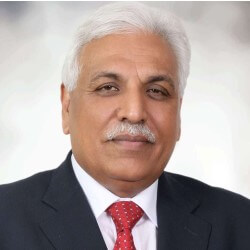
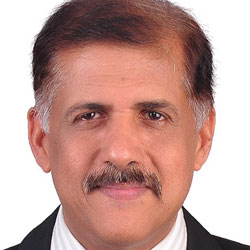







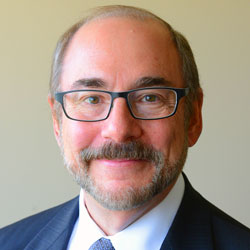


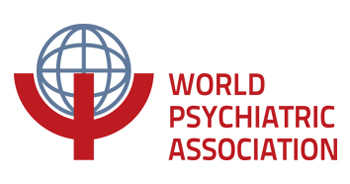

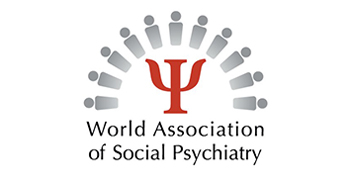
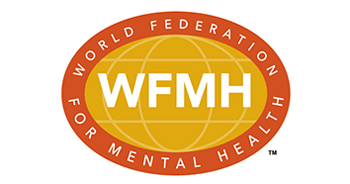


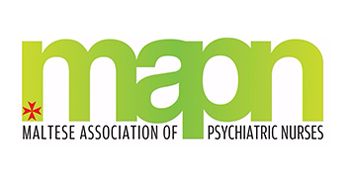



FOLLOW US!